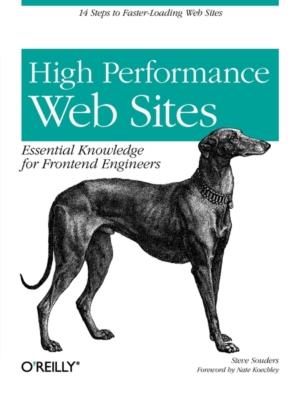
High Performance Web Sites (HPWS) is essentially a book-length exposition of the YSlow extension to Firebug augmented with case studies of popular US websites. YSlow itself links to some explanation paragraphs regarding the various guidelines that are used to grade the performance of a website. However, even for those familiar with this documentation, HPWS is still an excellent resource on how the performance of a web app can be tuned.
Chapter by chapter, HPWS introduces a new guideline and expounds the underlying rationale, giving illustrations of the HTTP requests with and without the suggested improvement. For instance, the use of far-future Expires HTTP headers is an easy-win recommendation that prevents unnecessary requests once a browser’s cache has been primed. This is something I’ve used on several sites previously, employing the following Apache directives to add Expires headers to the HTTP:
<IfModule mod_expires.c>
ExpiresActive on
ExpiresByType image/jpg “access plus 2 years”
ExpiresByType image/jpeg “access plus 2 years”
ExpiresByType image/gif “access plus 2 years”
ExpiresByType text/css “access plus 2 days”
ExpiresByType image/js “access plus 2 days”
ExpiresDefault ”access plus 1 days”
</IfModule>
Additional areas where I found out something new include:
- The performance hit that using @import directives within CSS files has.
- How the “Cache control” and “Etags” HTTP headers are often interpreted together by browsers to determine whether to make a request.
- How the choice of domains to use for serving content must be balanced against the extra DNS look-up costs that each new domain incurs.
Many of the performance guidelines can be adhered to easily, by making a few adjustments to the Apache configuration of your site; However, some performance-enhancing measures come at a cost to the development process (such as keeping all javascript in one large, minified file). Such costs can be mitigated by having a careful one-step build process that handles the conversion of easy-to-use development files to more performance-savvy production files. Nevertheless, in many cases, one has to decide where the balance between performance and inconvenience in development lies.
It’s quite a short book at 137 pages, but definitely a worthwhile addition to any company library.